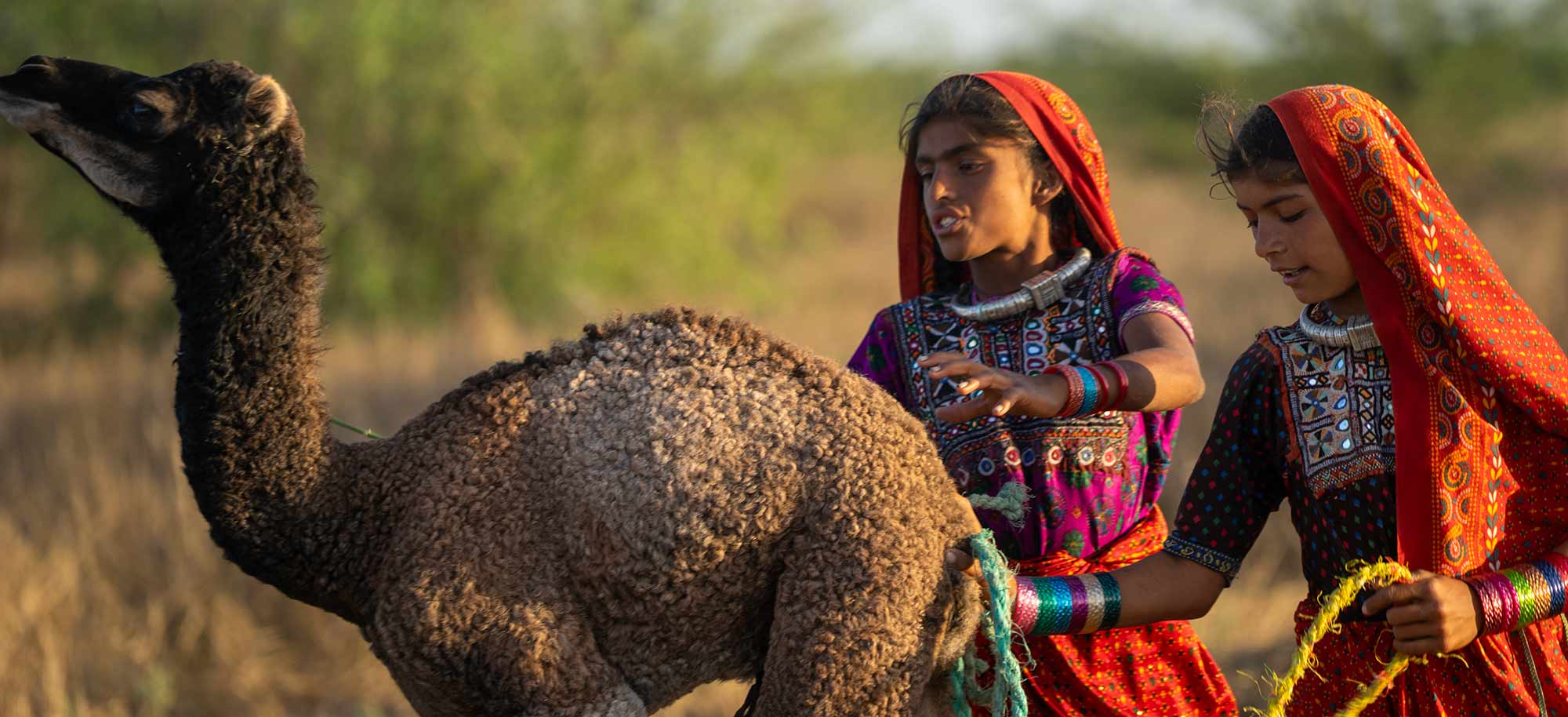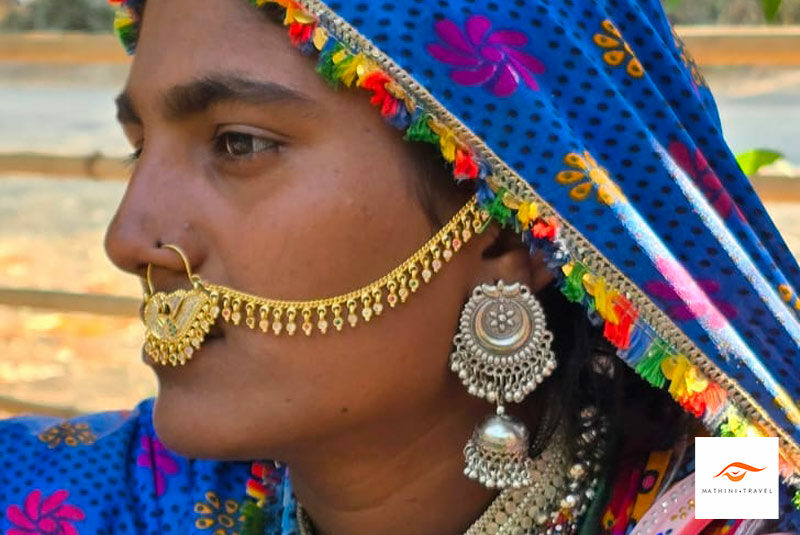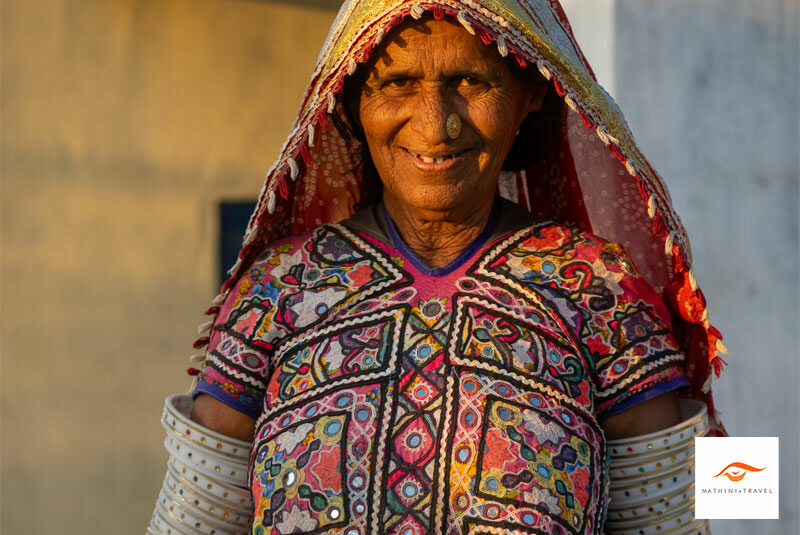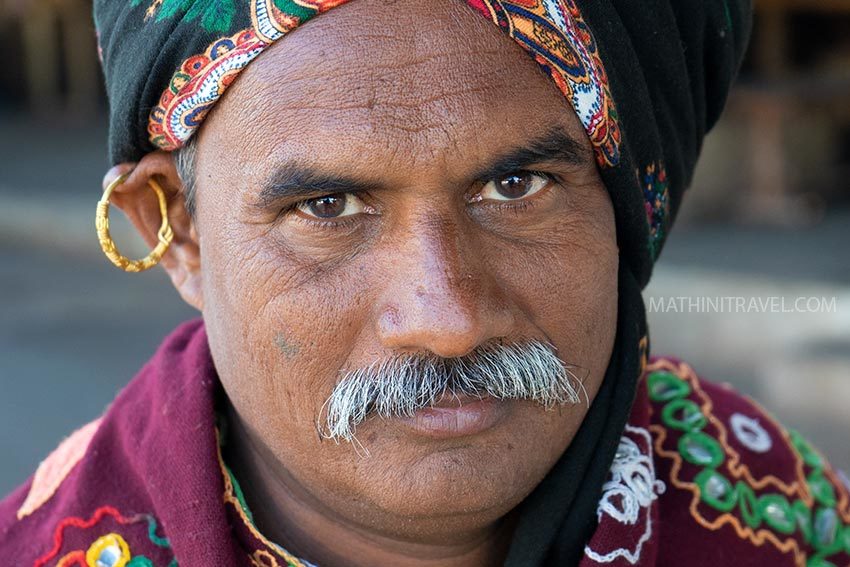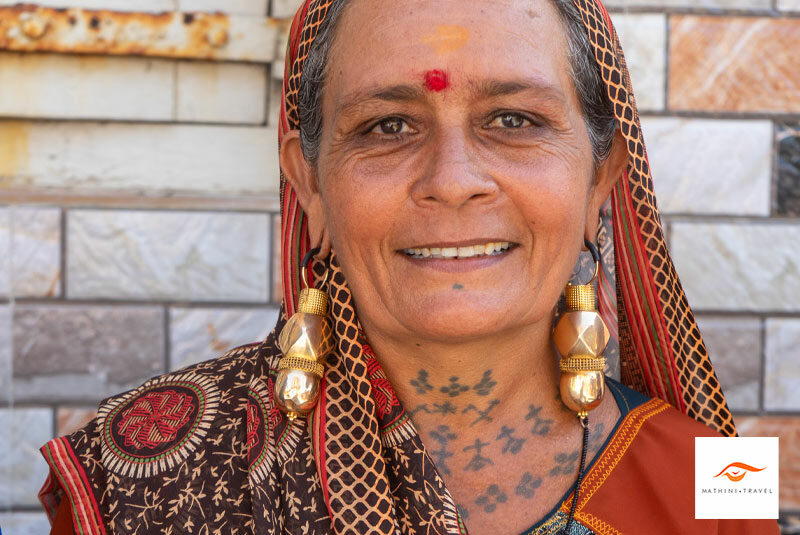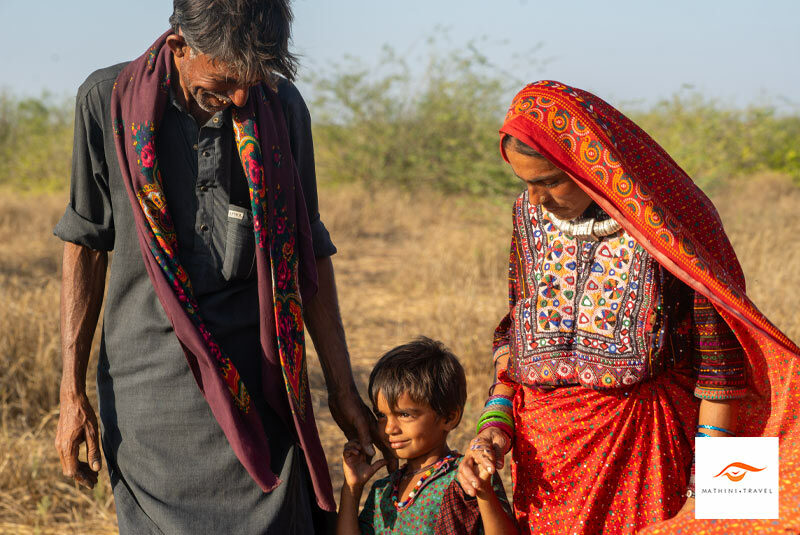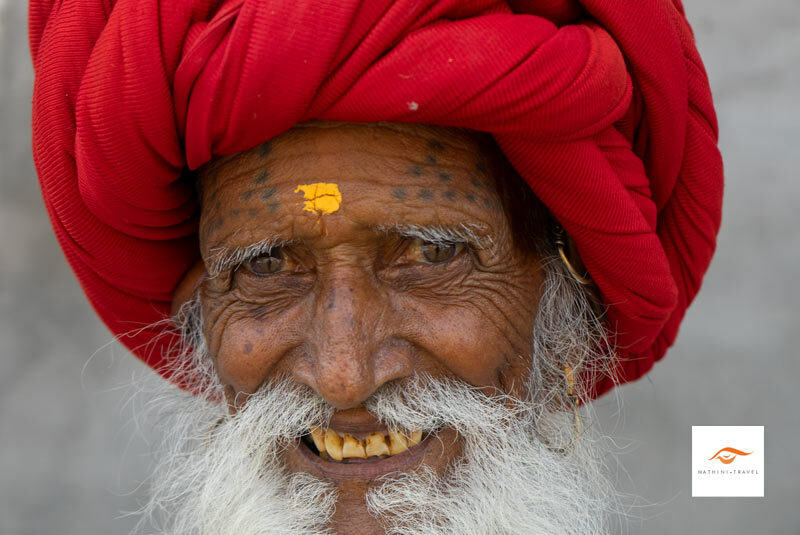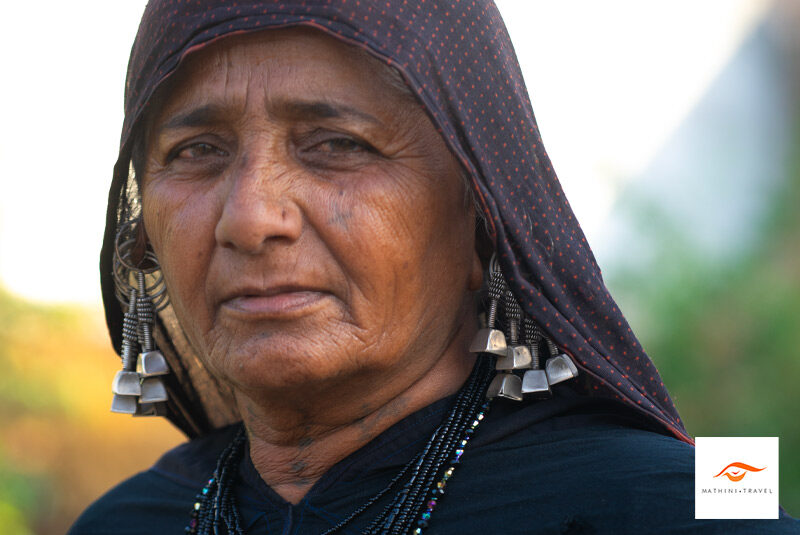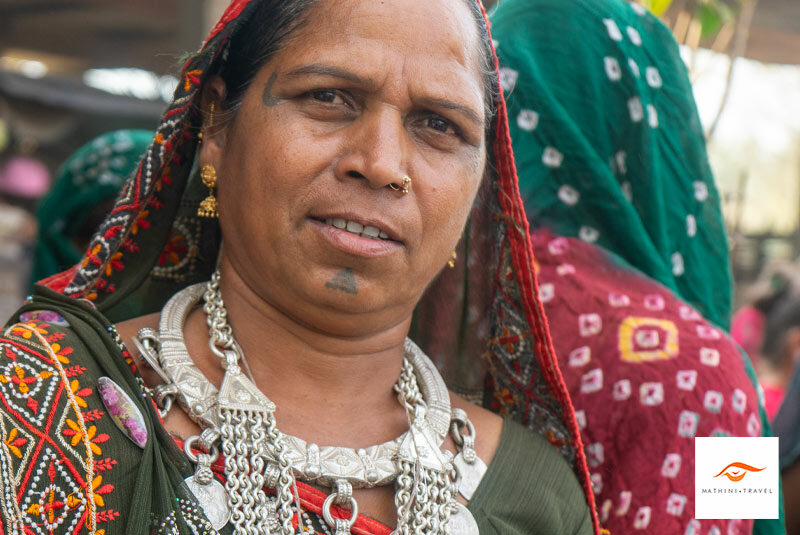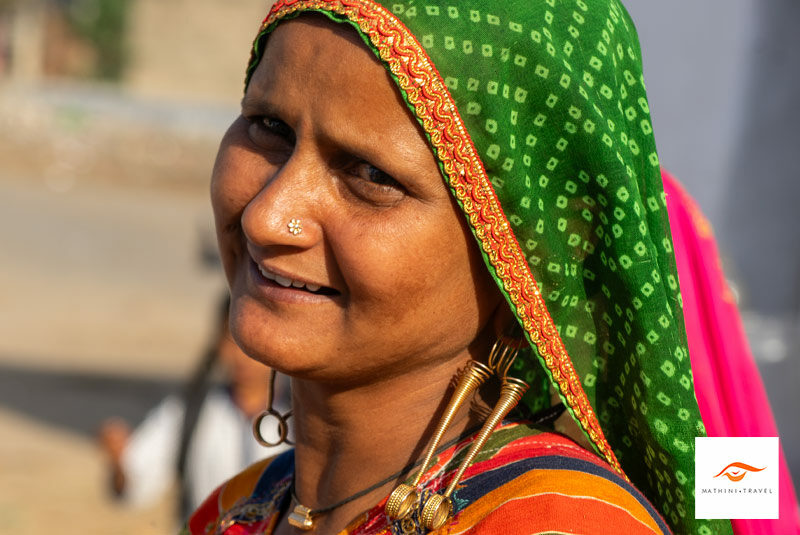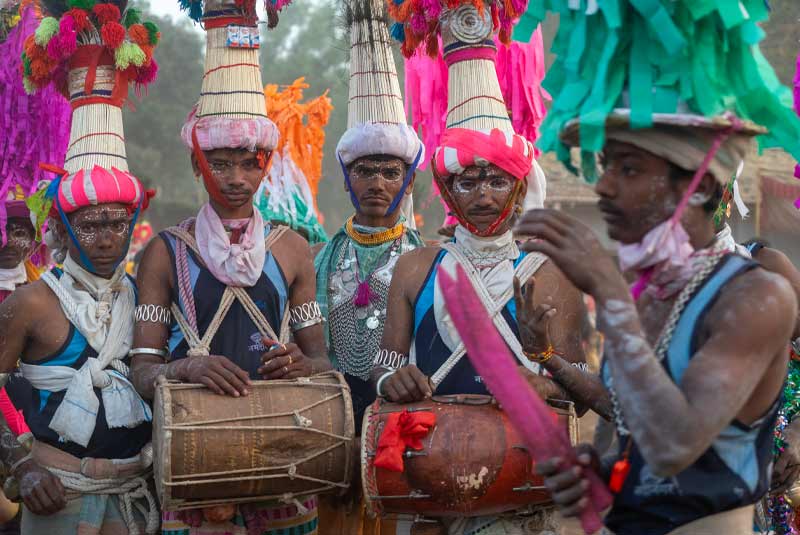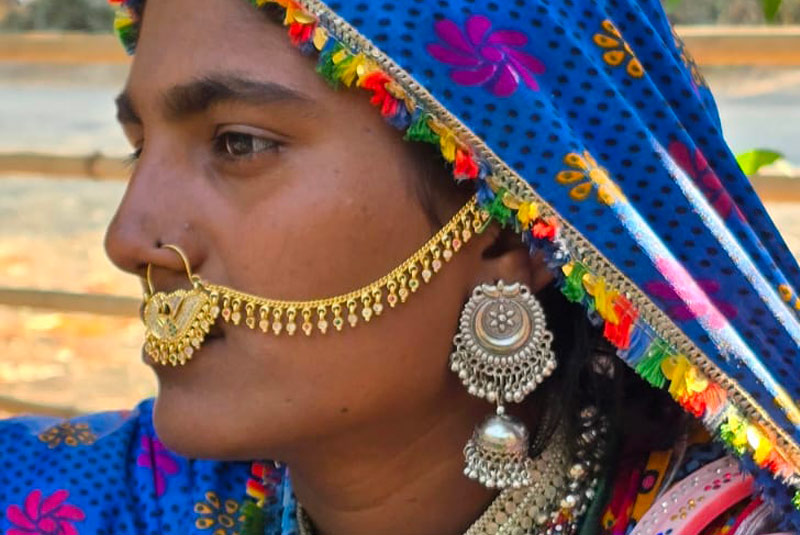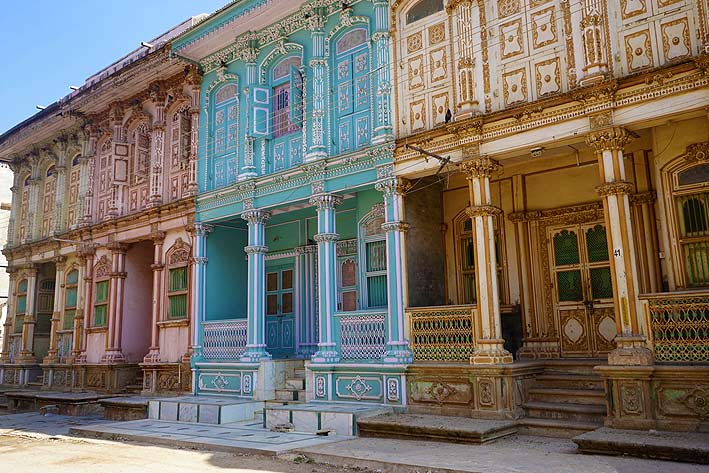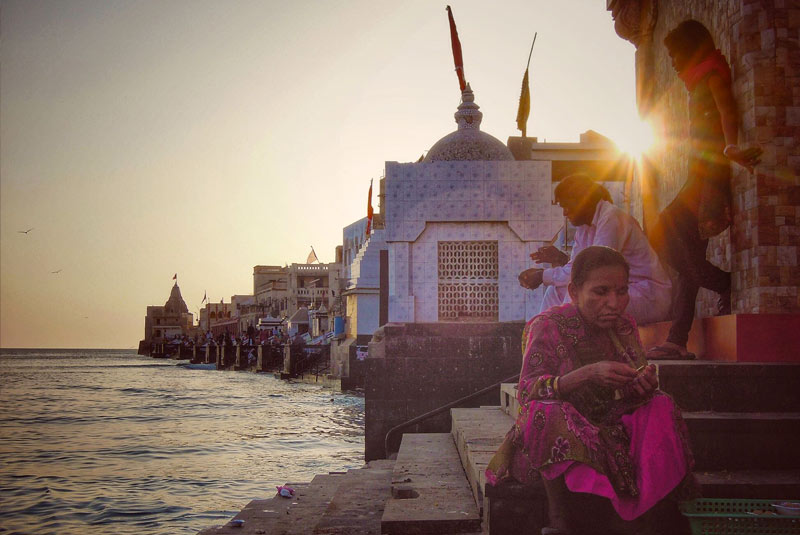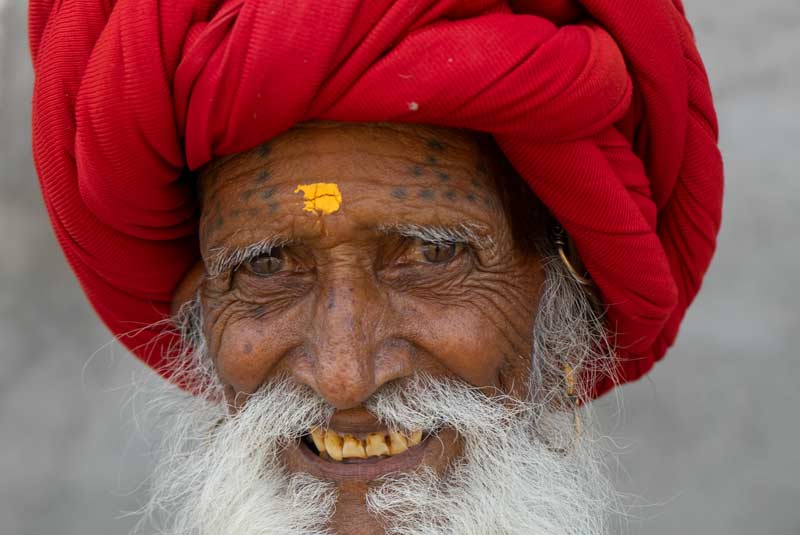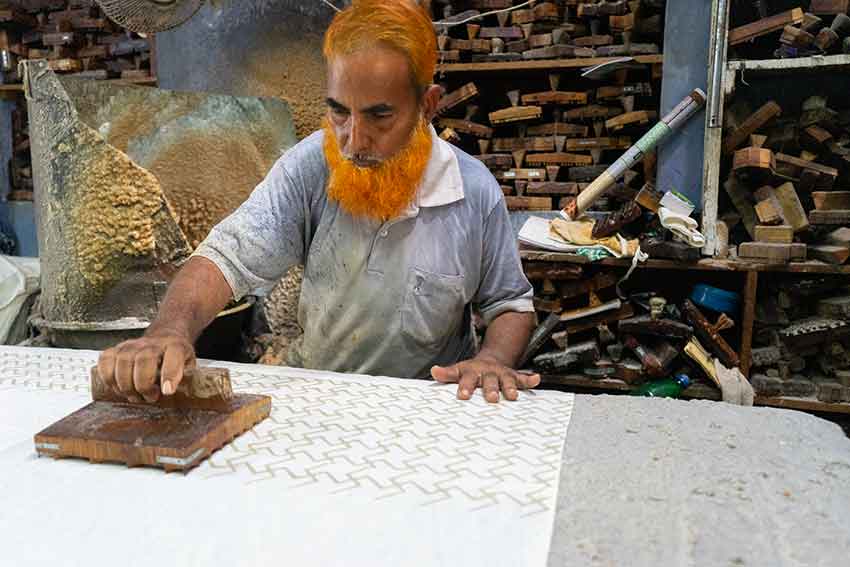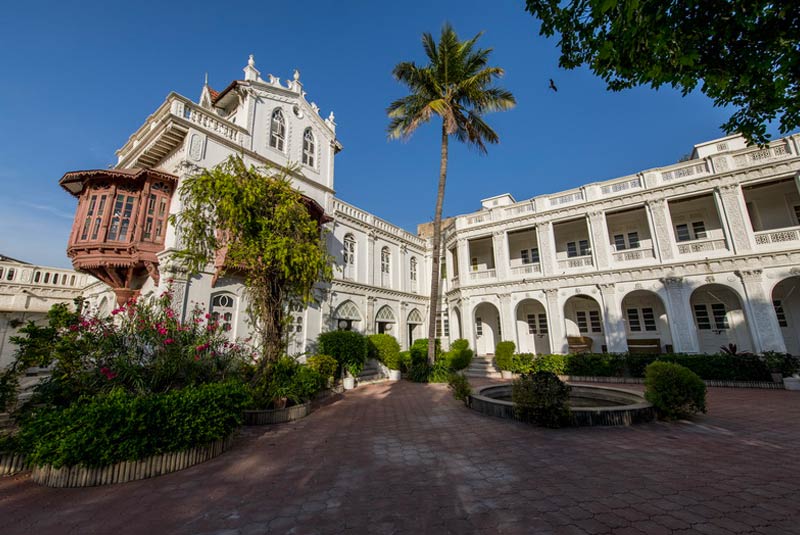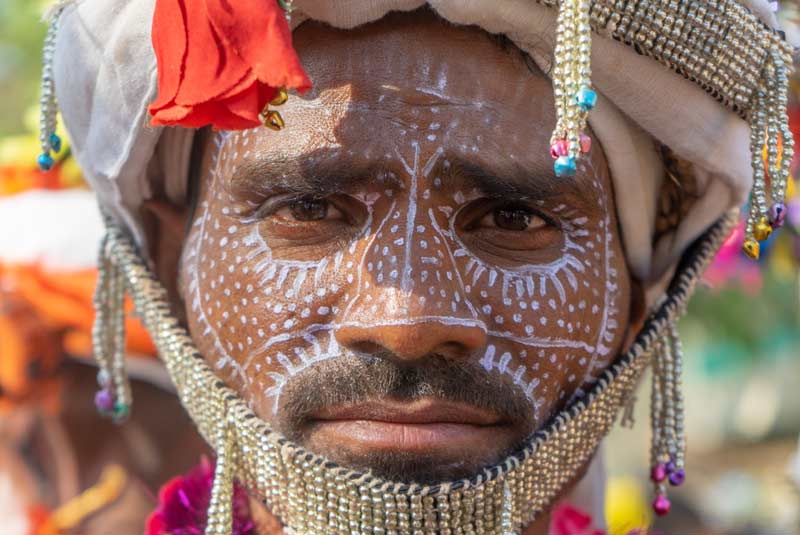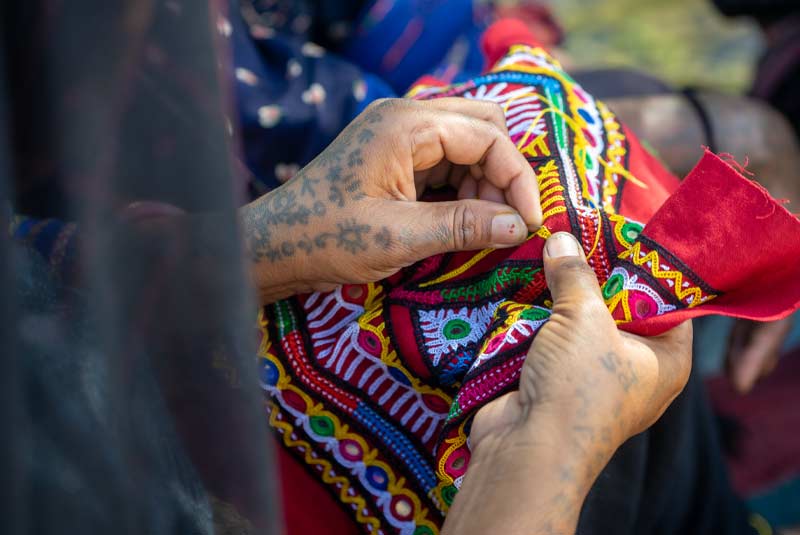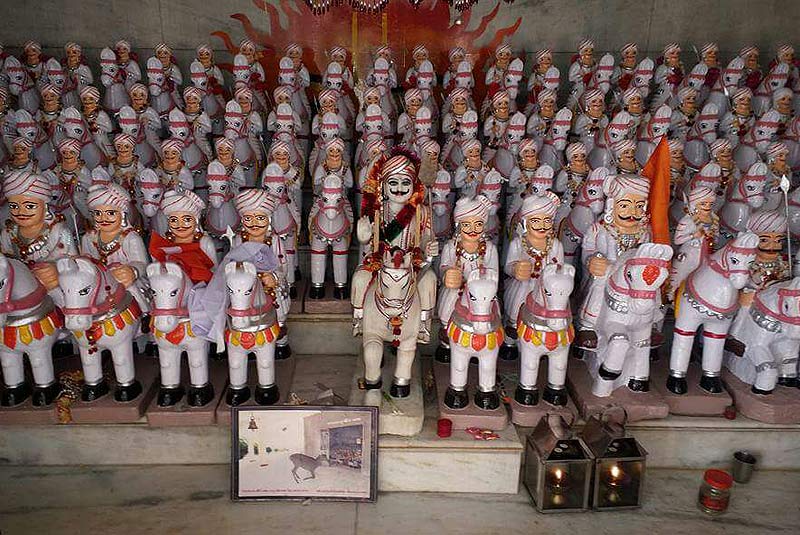Fascinating people of Gujarat
Embark on a captivating adventure through Gujarat, a state where ancestral traditions vibrate to the rhythm of tribal communities. This journey is an invitation to encounter, a dive into a world of colors, ancient know-how, and unique ways of life.
Your exploration begins with the Rathwa people in Chhota Udepur, whose homes are adorned with ritual Pithora paintings. These vibrant, meaningful murals tell sacred stories and provide a true window into their spirituality.
Then head to Poshina, where you will meet the Raika Rabari, a semi-nomadic pastoral community whose men are distinguished by their iconic red turbans.
You will also encounter the Garasia women, recognizable by their colorful outfits and distinctive adornments, a testament to their unique culture.
In Dasada, a captivating encounter awaits you with the Mir women, whose array of silver jewelry and traditional tattoos tell centuries of history.
Then, the road will take you into the vast region of Kutch. Here, you will explore the villages of various Rabari communities (distinct from the Raika), famous for the finesse and complexity of their embroidery, a meticulous art passed down from generation to generation.
Still in Kutch, you will encounter the discreet nomadic community of the Jat Fakirani, whom you might spot with their herds of dromedaries roaming the desert expanses of Banni.
Exploring Dwarka, you will meet the Bhopas, a branch of the Rabari with unique customs, and then in Porbandar, you will meet the Maher.
This trip is designed with a focus on mutual exchange and deep respect for the communities we encounter. We believe in a form of tourism that doesn’t just showcase, but also shares and enhances. In doing so, your trip becomes a win-win experience: you experience an unforgettable human adventure, rich in discoveries and encounters, while indigenous peoples benefit from fair economic support, enabling them to maintain their way of life and pass on their heritage to future generations.
Who is this trip for?
Photographers and those interested in Indian ethnic groups
When is the best time to travel to Gujarat?
From October to March
Since each trip is tailor-made, the price shown is an estimate. Your final quote will depend on your choices, such as hotel category, number of participants, vehicle type, and time of year. We will provide you with a personalized (and free) quote after discussing your preferences in detail.
INCLUDED:
- Accommodation in double occupancy in 3* and 4* hotels
- All breakfasts
- All transportation in a TOYOTA INNOVA with a driver who speaks basic English (taxes, fuel, accommodation, and driver’s meals included).
- Local guides
- Lunch with a Rathwas family in Chhota Udepur
- 24/7 support; we are in constant contact with you.
NOT INCLUDED:
- International flights
- Domestic flights
- Visa fees
- Bank fees
- Travel insurance (mandatory)
- Any arrangements not included in the program that result in additional costs
- Any personal expenses
- Tips
- Anything not listed in the “included” section
YOU MAY ALSO LIKE...
Arrivée à Vadodara > Jambughoda (1h30)
*
Lunch in Vadodara followed by a visit to the Lakshmi Vilas Palace, an opulent testament to the grandeur of the Gaekwad dynasty.*
Then depart for Jambughoda. Check into the small palace of the same name.Meeting with the Rathwa people in Chhota Udaipur (1 hour)
*
Perhaps the most emblematic aspect of the Rathwa culture is their ancestral artistic tradition of pithora paintings. These are not simply decorative pieces, but sacred murals created on the walls of their homes as an offering and a token of gratitude to their main deity, Pithora Baba.*
You will stroll through a haat (tribal market), visit its tribal museum and sacred shrines, as well as the old houses adorned with pithora paintings.*
You will also have lunch with a Rathwa family.*
Return to your small palace in JambughodaJambughoda > Ahmedabad (4h)
*
En route, stop at Champaner, a UNESCO World Heritage Site, and Pavagadh.*
Overnight stay in Ahmedabad.Ahmedabad visit
*
Early in the morning (around 7:30 a.m.), you will depart with an English-speaking guide for a heritage walking tour of approximately 2 hours in the old city of Ahmedabad, a UNESCO World Heritage Site. You will pass through the "pols," or closed neighborhoods, with their old-fashioned atmosphere, dotted with beautiful wood-carved mansions.*
Breakfast at the hotel, then continue your visits, including: The Hutheesing Jain Temple, built by a wealthy merchant in 1848 The Gandhi Ashram-Museum The Baoli, the Adalaj Stepwell, built in 1498*
Overnight in Ahmedabad.Ahmedabad > Poshina (4h)
*
Stay at the Poshina Palace, owned by the heirs of the region's maharajas.Poshina & Terracotta horses
*
You will also visit some of the region's Adivasi Bhil (indigenous) villages.*
In the afternoon, visit the Ambaji Temple and its market run by the Garasia community, whose women wear unique tunics with flower tassels on their shoulders.*
Overnight stay at Poshina Palace.Meeting with the Rabaris Raika
*
You will have lunch with a Rabari family.*
Overnight at Poshina Palace.Poshina > Dasada (6h)
*
Dasada is located on the edge of the Little Rann of Kutch, famous for being the last refuge of the Indian wild ass and a birdwatcher's paradise. The region is also renowned for its diverse tribes such as the Rabari, Bharwad, and Mir.*
En route, we will visit Siddhpur and its Bohra havelis, the Sun Temple of Modhera, and Patan, with its immense stepwell, a World Heritage Site, as well as workshops weaving "patola" saris, among the most expensive in India.*
Overnight stay at a resort in DasadaLittle Rann of Kutch region
*
Meet the Mir women, known for their silver jewelry and beadwork. And the Rabari Kharapat, whose women are skilled embroidery artisans. Traditionally, they worked on embroidered costumes as part of their dowry. They still maintain this artisanal tradition today.*
Overnight at the resortDasada > Bhuj (4h)
*
On the way, stop at the blockprinting workshops, a specialty of the Khatri communities.*
Stay in a charming guesthouse.Bhuj > Villages Rabaris & Ahir
*
We will then visit several villages to meet the Vagadiya and Debariya Rabaris and the Ahir community.*
Return to BhujBhuj > Devpar (1h)
*
After settling into your charming hotel, you will explore the village of Devpar on foot with a guide to meet the Rabari Khasi tribe.*
You will also discover the mysterious Jakh Botera temple, home to 64 statues of mythical horsemen.Devpar > Than Jagir > Nirona > Hodka
*
Along the way, we will make several stops: In Dhinodhar, where the ancient Hindu monastery of Than Jagir stands. Kanphata sadhus, or "saddhus with pierced ears," are sometimes encountered there.*
In Nirona, to admire the "rogan" textile paintings, a unique art form in India created by the Khatri community. In the same village, you can also observe the making of bronze bells and lacquerware created by the Vadha community, all typical crafts of the region.*
Upon arrival, check into your hotel in Hodka.people of Banni
*
The Meghwals: known for their embroidery skills, their round houses are decorated with bright colors and lippan, an art that involves creating raised patterns with clay. Note: Young women are not permitted to be photographed. The Pathans in their isolated village.
*
You will also stop at Khavda, a village renowned for its pottery of the same name, which is still produced by a single family. The history of Khavda pottery dates back to the Indus Valley Civilization, which flourished in the region around 2500 BCE.*
At sunset, you'll walk across the salty soil of the Rann of Kutch, the great white desert of Gujarat.*
Overnight in HodkaHodka > Jamnagar (6h)
Jamnagar > Dwarka (2h)
*
Bala Hanuman Temple: This temple is famous for its continuous, uninterrupted chanting of the mantra "Ram Dhun" since 1964, earning it a place in the Guinness Book of Records. The peaceful atmosphere and rhythmic prayers create a profound spiritual experience.*
On the way to Dwarka, we will stop in a village where the Rabari Bhopa raise Kharai dromedaries, the "swimming dromedaries." The Kharai's most distinctive characteristic is their ability to swim in seawater for several kilometers to move from island to island in the mangrove areas. They are the only dromedaries known for this ability.*
Upon arrival in Dwarka, check into your hotel located near the Gomti River. You will then be able to stroll peacefully along the city's ghats.Dwarka & Rabari Bhopa
*
You will begin with the Dwarkadeesh Temple, the most revered of all, then visit several other shrines: Bhadkeshwar Mahadev, located on a rock in the middle of the Arabian Sea, and the temple of Rukmini, Krishna's divine wife. You will end your visit to Dwarka with the Nageshwar Temple, recognizable from afar thanks to its immense 12-meter statue of Lord Shiva. It houses the "lord of the cobras," another of the twelve "jyotir lingams" or "lingams of light."*
En route, we will stop in villages in Rabari Bhopa (depending on the availability of the villagers).Dwarka > Porbandar > Junagadh (4h)
*
This destination offers sacred sites such as Uparkot Fort and the Girnar temples, and masterpieces of Indo-Islamic architecture such as the Mahabat Maqbara.*
On the way, we will stop in a village to meet the Maher community, which boasts a vibrant cultural heritage, including unique dances such as the Maniaro Raas, a martial dance performed by men, as well as traditional costumes and distinctive jewelry.*
Upon arrival, check into your hotel.Junagadh > Gir Rabari
*
Girnar (or Mount Neminath for Jains) is a group of mountains and hills and the highest point in Gujarat (1,118 m). It is also an important pilgrimage site for both Jains and Hindus, as it houses temples of both religions.*
We will then travel to the outskirts of Junagadh to meet the Rabaris of Gir.*
Overnight stay in JunagadhJunagadh > Palitana (4h)
*
Upon arrival, check into your hotel.Palitana pilgrimage
*
Overnight stay in Palitana

